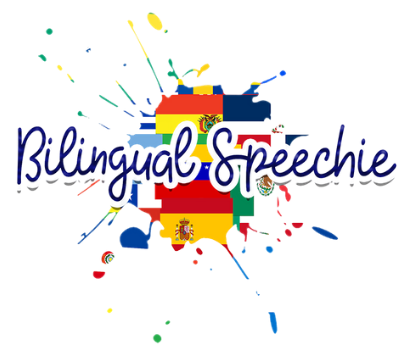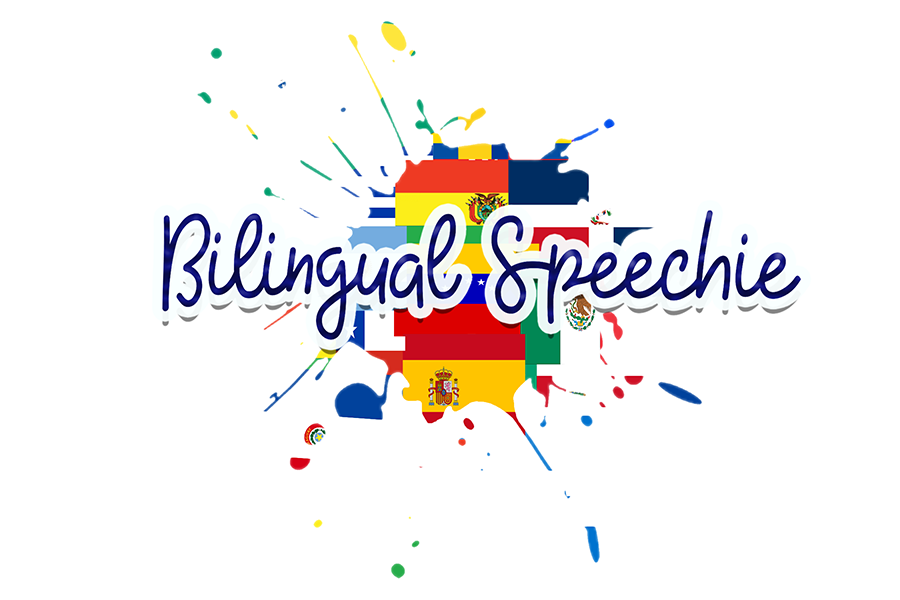by Liliana Diaz July 07, 2020 1 Comment
There are different bilingual programs that exist in the school setting and you may be wondering which program may best suite your child in order to maintain your home language or perhaps you would like to enhance your child’s language learning abilities in Spanish, Chinese, French, Arabic, Korean, etc. In this blog post, I will discuss some of the major bilingual programs that exist in the school setting as well as the advantages and disadvantages of enrolling in those programs.
Why some parents might not want to seek bilingual programs
There are many reasons why parents might not want to seek dual language programs. One common reason is the perception that the general status of the home language is low relative to that of the “dominant language.” This is a very common perception that is built by the hardships that some immigrant families go through because they did not speak English when immigrating to the US. However, we know that this perception doesn’t prove to be true. There are many advantages to being bilingual, some advantages include increased cognitive skills and cognitive flexibility. Another reason that parents might not want to seek a bilingual program for his/her child might be due to the belief that bilingualism will cause academic difficulties. This is a common myth that has been debunked and you can read about the research that debunks this myth and other myths here.
The importance of bilingual programs
Bilingual education can increase your child’s academic skills, social skills, language skills, literacy skills and cultural awareness! “Bilingual children exhibit significant cognitive advantages in comparison to monolingual children” (Bialystok 2006; Chin & Wigglesworth 2007; Kovaac & Mehler 2009). Research studies suggest that bilingual programs can best support English language learners and lead to overall academic gains. A recent research article in the Chicago Tribune stated, “Chicago Public Schools students who aren’t proficient in English when they enter kindergarten tend to have better attendance and in some cases higher test scores than their peers who are native English speakers, according to a new study by the University of Chicago.” In addition, other advantages to bilingual programs include the ability to be biliterate (the ability to read in both languages) and having more educational and career opportunities in the future. Many job employers often prefer to hire individuals who speak more than one language in order to increase communication across all borders this includes professions such as teachers, speech language pathologists, other health professions such as doctors, flight attendants, tech consultants, etc.
Know the difference and types of bilingual programs that exist
There are many program models that exist within the realm of bilingual education. Therefore, it is important to ask questions to your school administrators or teachers in order to find out what programs the school offers. Each program is unique and offers different types of bilingual support depending on the students’ needs therefore, the types of supports provided may vary school to school. Here are some of the most common bilingual program models that you may come across in the school setting.
Transitional bilingual program (early exit)
Goal: Monolingualism
Description: Early exit programs use English language learner’s home language as a foundation for building English proficiency. The program can last from 1-4 years depending on the school. Although this program is considered a bilingual program, students will eventually loose instruction in their native language and instruction is eventually replaced with English-only instruction. The goal for this program is to quickly integrate the mainstream language (English) in the curriculum.
Transitional bilingual program (late exit) / Developmental bilingual program
Goal: Limited bilingualism
Description: Late exit programs provide an extended amount of instruction and time to mastering literacy in both languages. Late exit programs provide more instruction in the student’s native language during the early elementary years and by middle school, instruction shifts to predominately English. Most late exit programs provide bilingual support up to the 5th or 6th grade depending on the school.
One-way dual language program / Foreign language immersion
Goal: Bilingualism & Biliteracy
Description: All students in the program have the same native language. The program supports one language group of students to become bilingual and biliterate. Instruction is usually given equally in both languages and students that enroll in this type of program are primarily English speakers.
Two-way dual language program / Two-way immersion program
Goal: Bilingualism & Biliteracy
Description: Students from two different language groups learn both languages. Instruction is provided equally in both languages and sometimes split between morning/afternoon depending on the school. Students are learning the school languages and others are learning the native language of their classmates. A balance of native English speakers and native speakers are enrolled in this kind of program.
Once again, research supports dual language programs as the best kind of programs that will enable your child to become biliterate and bilingual. Dual language programs not only foster bilingualism but enhanced awareness of linguistic and cultural diversity and high levels of academic achievement. In the examples above, the dual language programs that may be more suitable to reach bilingualism and biliteracy are two- and one- way dual language programs. Make sure to inform yourself about the different types of bilingual programs and others that may have not been mentioned in this post before enrolling your child in a bilingual program.
November 25, 2022
Thanks for mentioning that one-way bilingual education is primarily used by English speakers. I speak Spanish so I’m hoping that I can enroll my daughter in a Spanish immersion program. It would be really nice to find one that accepts kids up to 6th grade. http://trlanguages.com/admissions.html
Comments will be approved before showing up.
by Liliana Diaz September 26, 2025
When parents hear the word “stuttering,” it can bring up worry or fear about their child’s future. For many years, stuttering was viewed only as a “problem to fix.” But today, new research and approaches help us see stuttering in a different, more affirming way—one that celebrates communication in all its forms and embraces verbal diversity.
by Liliana Diaz September 26, 2025
As parents, it’s natural to notice how your child talks and to wonder whether their speech is developing as expected. If your child is hard to understand or struggles to say certain sounds, you may have heard the term “speech sound disorder.” But what does that mean? Let’s break it down together.
by Liliana Diaz September 26, 2025
As parents, we celebrate every new word, every little sound, and every funny phrase our children come up with. But sometimes, you may find yourself wondering: “Should my child be talking more by now?” or “Is this a sign of a speech delay?”

Who are we?
Bilingual Speechie LLC. is a small business dedicated to providing inclusive and engaging speech therapy resources and activities for bilingual children, parents, SLPs and educators.
Bilingual Speechie LLC promotes bilingualism and multilingualism by dispelling common myths, providing education on bilingual language development, and promoting heritage language maintenance amongst bilingual families.
About the Owner:
Liliana Diaz-Vazquez is a certified licensed bilingual speech language pathologist (SLP), currently practicing in Chicago, Illinois. She obtained her bachelor’s degree in communication disorders (2012) and her master’s degree in speech language pathology at Saint Xavier University (2014). She is a certified member of the American Speech-Language and Hearing Association (ASHA) since 2014, a member of the Illinois Speech and Hearing Association (ISHA) since 2014 and maintains licensure in the state of Illinois.
Liliana is a first-generation Mexican-American Latina, a small business owner, a full-time school-based SLP, & a bilingual parent, who takes pride in her roots, culture, & heritage language. She loves being able to share her experience as a Latina SLP, and a bilingual mom, as well as her culture & heritage language with the educator, SLP, and parent community.
Liliana Diaz-Vazquez has extensive experience working with the bilingual English and Spanish speaking population & multilingual population. She specializes in augmentative/alternative communication (AAC), bilingual language development and language delays/disorders in bilingual/multilingual children. She has also worked in the early intervention setting for several years where she gained vast experience working with interpreters and bilingual/multilingual families.
Liliana began creating digital bilingual resources and activities in 2014 out of need while working full-time in the school setting as a SLP. Liliana worked with many Spanish-speaking families and quickly realized that there were limited Spanish and bilingual speech therapy resources available for her students and their families. In addition, Liliana quickly became aware that there was a need for education about bilingualism and typical bilingual language development as many of the families she worked with had encountered misinformation about bilingualism. Liliana began developing resources and eventually started Bilingual Speechie LLC with the mission to provide education to SLPs and families about bilingualism, as well as provide inclusive and diverse materials for speech therapy in order to help bilingual families and SLPs gain access to appropriate bilingual materials for children with communication disorders.
Today Liliana currently works full-time in the Chicago public school setting as a lead bilingual SLP where she consults and collaborates with SLPs daily to help them understand how to assess and provide culturally and linguistically appropriate services for bilingual and/or multilingual students. She also runs her small business, Bilingual Speechie LLC, and is on a mission to expand and grow her business so that all SLPs, educators, and families can have access to inclusive, diverse, and bilingual resources in a variety of languages for speech therapy.
Professional Development:
Liliana has vast experience as a speaker/presenter and has presented at several conferences over the years. You can view all previous conferences and topics that Liliana has presented on here. Liliana is available to present on topics such as best practices when working with multilingual populations, bilingual speech/language assessment and treatment, goal writing with multilingual populations and much more. If you are interested in booking Liliana for a conference or event please don't hesitate to send an email at lilianadiaz@bilingualspeechie.com
 English
en
English
en
 English
en
English
en


Liliana Diaz
Author